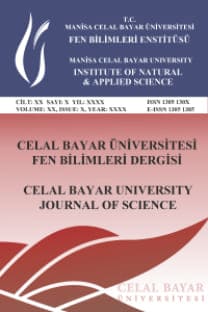Confidence Interval based Quality Improvement for Non-normal Responses
Confidence Interval based Quality Improvement for Non-normal Responses
___
- Taguchi, G. Introduction to Quality Engineering: Designing Quality into Products and Processes; Asian Productivity Organization: Tokyo, 1986.
- Box, GEP. 1985. Discussion of off-line quality control, parameter design, and the Taguchi method. Journal of Quality Technology; 17: 198-206.
- Vining, GG, Myers RH. 1990. Combining Taguchi and response surface philosophies: A dual response approach. Journal of Quality Technology; 22(1): 38-45.
- Box, GEP, Wilson, KB. 1951. On the experimental attainment of optimum conditions. Journal of the Royal Statistical Society; 13: 1-45.
- Del Castillo, E, Montgomery, DC. 1993. A nonlinear programming solution to the dual response problem. Journal of Quality Technology; 25: 199-204.
- Lin, DKJ, Tu, W. 1995. Dual response surface. Journal of Quality Technology; 27(1):34-39.
- Copeland, KA, Nelson, PR. 1996. Dual response optimization via direct function minimization. Journal of Quality Technology; 28(1): 331-336.
- Köksoy, O, Doganaksoy, N. 2003. Joint optimization of mean and standard deviation in response surface experimentation. Journal of Quality Technology; 35(3): 239-252.
- Shoemaker, AC, Tsui, KL, Wu, CFJ. 1991. Economical experimentation methods for robust parameter design. Technometrics; 33: 415-427.
- Lucas, JM. 1994. How to achieve a robust process using response surface methodology. Journal of Quality Technology; 26(4): 248-260.
- Zeybek, M, Köksoy, O. 2016. Optimization of correlated multi-response quality engineering by the upside-down normal loss function. Engineering Optimization; 48: 1419-1431.
- Zeybek, M. 2018. Process capability: A new criterion for loss function–based quality improvement. Süleyman Demirel University Journal of Natural and Applied Sciences; 22: 470-477.
- Elsayed, EA, Chen, A. 1993. Optimal levels of process parameters for products with multiple characteristics. Journal of Production Research; 31(5):1117-1132.
- Tan, MHY, Ng, SH. 2009. Estimation of the mean and variance response surfaces when the means and variances of the variables are unknown. IIE Transactions; 41(11): 942-956.
- Quyang, L, Ma, Y, Byun, JH, Wang, J, Tu Y. 2016. An interval approach to robust design with parameter uncertainty. International Journal of Production Research; 54(11): 3201- 3215.
- Miro-Quesada, G, DelCastillo, E, Peterson, PP. 2004. A Bayesian approach for multiple response surface optimization in the presence of noise variables. Journal of Applied Statistics; 31(3): 251-270.
- Bisgaard, S, Fuller, H. 1994. Analysis of factorial experiments with defects or defectives as the response. Quality Engineering; 7(2):429-443.
- Box, G, Fung, C. 1994. Is Your Robust Design Procedure Robust?. Quality Engineering; 6(3): 503–514.
- Nelder, JA, Lee, Y. 1991. Generalized linear models for the analysis of Taguchi-type experiments. Applied Stochastic Models and Data Analysis; 7:107-120.
- Myers, WR, Brenneman, WA, Myers, RH. 2005. A dual response approach to robust parameter design for a generalized linear model. Journal of Quality Technology; 37:130-138.
- Boylan, GL, Cho, BR. 2013. Comparative studies on the high-variability embedded robust parameter design from the perspective of estimators. Computers and Industrial Engineering; 64: 442-452.
- Zeybek, M, Köksoy, O. 2018. The effects of gamma noise on quality improvement. Communications in Statistics-Simulation and Computation; 48: 1-15.
- Johnson, JN. 1978. Modified t tests and confidence intervals for asymmetrical populations. Journal of the American Statistical Association; 73 (363): 536-544.
- Boukezzoula, R, Galichet, S, Bisserier, A. 2011. A Midpoint– Radius approach to regression with interval data. International Journal of Approximate Reasoning; 52: 1257-1271.
- Köksoy, O. 2006. Multiresponse robust design: Mean square error (MSE) criterion. Applied Mathematics and Computation; 175: 1716-1729.
- Ding, R, Lin, DKJ, Wei, D. 2004. Dual-response surface optimization: A weighted MSE approach. Quality Engineering; 16(3):377-385.
- Box, GEP, Draper, NR. Empricial model-building and response surface; John Wiley & Sons, New York, NY, 1987.
- Oyeyemi, GM. 2004. Treatment of non-normal responses from designed experiments. Journal of the Nigerian Statistical Association; 17: 8-19.
- ISSN: 1305-130X
- Yayın Aralığı: 4
- Başlangıç: 2005
- Yayıncı: Manisa Celal Bayar Üniversitesi Fen Bilimleri Enstitüsü
Meltem YESİLCİMEN AKBAS, Taner SAR
Yasemin TUNCER ARSLANLAR, İlker Çetin KESKİN, Mehmet İsmail KATI, Murat TÜREMİŞ, Ahmet ÇETİN, Rana KİBAR
Investigation on Cathodoluminescence Properties of Copper Implanted ZnO Samples
Murat TÜREMİŞ, Yasemin TUNCER ARSLANLAR, Ahmet ÇETİN, Rana KİBAR, İlker Çetin KESKİN, Mehmet İsmail KATI
Confidence Interval based Quality Improvement for Non-normal Responses
Contents, Volume 15, Issue 2, 2019
Predicting Co-Changed Files: An External, Conceptual Replication
